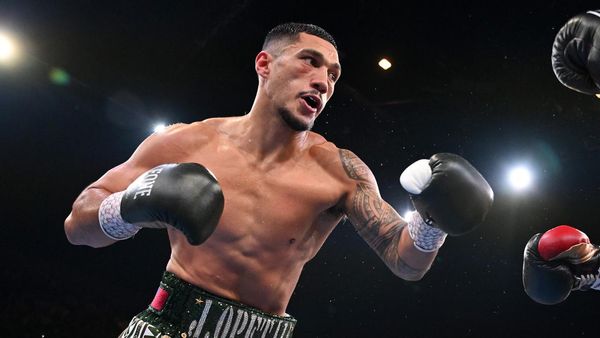In the current Budget session, how much money the Central and State governments will allocate to education and for what purpose should be a matter of public concern and debate. Even before the pandemic, public spending on education in most States was below that of other middle-income countries. Most major States spent in the range of 2.5% to 3.1% of State income on education, according to the Ministry of Education’s Analysis of Budgeted Expenditure on Education. This compares with the 4.3% of GDP that lower-middle-income countries spent, as a group, between 2010-11 and 2018-19. Low-income countries increased their spending from 3.2% to 3.5% of GDP in the same period (World Bank, Education Finance Watch, 2021).
Spending on education
Faced with an unprecedented education emergency, this is the time to substantially ramp up public spending on education and make it more effective. Inexplicably, however, in the 2021-22 Budget, in the midst of the gravest education crisis, the trend was in the opposite direction for the Central government and many State governments. The Central government’s allocation for the Education Department was slashed compared to the previous year, even though the size of the overall budget increased. Of the major States and Delhi, eight either reduced or just about maintained their budget allocation for education departments in 2021-22 compared to 2020-21. Seven States marginally increased their allocation by 2%-5%. Only six States increased their allocation by more than 5%, though it remains to be seen how actual expenditures compare with budget allocation.
Budget 2021 | Expenditure rises marginally for education
The education system now needs not only an infusion of resources for multiple years, but also a strengthened focus on the needs of the poor and disadvantaged children. The vast majority of the 260 million children enrolled in preschool and school, especially in government schools, did not have meaningful structured learning opportunities during the 20 months of school closures. They have lost basic literacy and numeracy skills, and even the habit of learning. Millions have disengaged from education, due to lack of contact with teachers. Even when schools started re-opening in October, they were operating only at half schedule. Some States have still not opened primary schools. In anticipation of the Omicron wave, State governments rushed to close primary schools first in early January 2022, contrary to all international trends.
Increased public spending alone is a necessary but not sufficient condition to address all these problems. What it is spent on and how effectively resources are used are important. It is clear what additional resources are required for. The needs include: back-to-school campaigns and re-enrolment drives; expanded nutrition programmes to address malnutrition; reorganisation of the curriculum to help children learn language and mathematics in particular, and support their socio-emotional development, especially in early grades; additional learning materials; teacher training and ongoing support; additional education programmes and increased instructional time during vacations and weekends; additional teachers and teaching aides, where required, in part to cope with transfer of students from private schools; and collection and analysis of data.
Many State governments and the Central government have been spending public resources to use technology in education. This is a good time to ask how much of public resources was/is being spent on technology and how effective it was during the pandemic, when less than 20% of all students could access even prerecorded videos. How does expenditure on technology compare with the amounts spent on teacher training, which represents just 0.15% of total estimated expenditure on elementary education? Teachers are central to the quality of education, so why does India spend so little on teacher training?
Treating education as a public good
The disaster caused by the pandemic could be the opportunity to reverse the chronic under-funding of India’s public education system. UNESCO’s 2030 framework for action suggests public education spending levels of between 4% and 6% of GDP and 15%-20% of public expenditure. A recent World Bank study notes that India spent 14.1 % of its budget on education, compared to 18.5% in Vietnam and 20.6% in Indonesia, countries with similar levels of GDP. But since India has a higher share of population under the age of 19 years than these countries, it should actually be allocating a greater share of the budget than these countries.
Opacity of data
How does India’s public education expenditure “effort” compare with the UNESCO indicative benchmarks? The opacity of education finance data makes it difficult to comprehend this. For instance, the combined Central and State government spending on education was estimated to be 2.8% of GDP in 2018-19, according to the Economic Survey of 2020-21. This figure had remained at the same level since 2014-15. On the other hand, data from the Ministry of Education indicates that public spending on education had reached 4.3% of GDP in the same year, rising from 3.8% of GDP in 2011-12.
The difference in the figures is due to the inclusion of expenditure on education by departments other than the Education Department. Including expenditure on education by, for example, the Ministry of Tribal Affairs, the Ministry of Social Justice and Empowerment (on Anganwadis, scholarships, etc.), the Ministry of Science and Technology (for higher education) is of course legitimate. But many of the other departments comprise a smorgasbord. No fewer than 43 Ministries and Departments of the Central government are supposed to be spending on education. Education expenditure by other departments has been rising faster than that by the Education Department, at both Central and State level. They constitute one-quarter of the education expenditure by the States in 2018-19, and half of the Centre’s expenditure on education.
Time to prioritise education and health
However, the composition of these expenditures is not readily available. Public expenditure on elementary education (about 1.8% of GDP) and for other levels of education are rough estimates. The reason is that other than the Education Ministry, education expenditures of departments are not shown by level. They are somewhat arbitrarily assigned to different levels of education and estimated by the Central government. The estimation of education expenditure by other departments of the State governments is even more crude, as they do not even provide separate expenditures on education. The ratio of education spending in other departments at the Central level is used to estimate this for each of the States.
In an era of data deluge, it is astonishing that public expenditure data on the education sector are not easily available. But the questions for this Budget should be clear. How much additional funds are being allocated for different levels of education by the principal departments in 2021-22? Are the funds being spent on the specific measures required to address the education emergency facing the children who have been deprived of learning opportunities?
Sajitha Bashir is former Education Manager and Adviser, World Bank, and core member of the National Coalition on the Education Emergency







